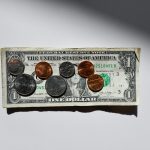Commentary on the Market: First Quarter 2022 Market Overview and What is on the Horizon
Ruben’s Commentary on the Market
First Quarter 2022
The first quarter of 2022 can only be described as “one tough ride”. The final quarter of 2021 finished the year on a very positive note with both the S&P 500 and the NASDAQ eclipsing 20% growth and the DJIA clearing the 18% hurdle. The expectations of the continued strong earnings growth into 2022 were on the forefront. However, the euphoria of two years of solid gains was interrupted by rising prices on almost everything which led to inflation concerns. The primary organization charged with dealing with inflation is the Federal Reserve Bank. The Fed can raise interest rates to slow the economy or lower rates to stimulate a low growth environment. The Fed would soon begin to set a timetable for raising rates to curtail inflation. If that wasn’t enough, more uncertainty came into play with Russia invading Ukraine.
We have now entered the second quarter of the new year. More Americans are working and spending despite rising prices, and the Fed has formally begun raising rates to curb inflation. These are the dominant themes at this point. Ultimately, what impact will these overriding issues have on corporate earnings? Corporate earnings are the life blood of successful companies and play an important role in driving a strong economy.
Two questions being asked in the current environment are – at which point will prices stabilize; and when will the consumer slow down their spending? There are signs that the consumer is tiring. The U.S. Consumer Confidence Index in March reported a reading of 107.2 in March, showing a sharp drop from a pre-pandemic reading of 128. Additionally, real personal spending (which takes into account inflation) fell by 0.4% in February. Many economists are highlighting the strength of the consumer, but there are telltale signs that spending is showing signs of slowing which will eventually pump the brakes on rising prices. However, supply chain issues are still a problem affecting most sectors of the economy. These shortages play a role in price increases.
The latest outlier pushing oil and gas prices up and adding to the uncertainty of when prices will come down is the conflict in Ukraine. The U.S. and NATO allies have placed embargos on Russian oil and have begun utilizing their respective oil reserves. The Biden administration is backing away from earlier efforts to move away from carbon-based energy exploration and is resurrecting efforts to drill for more gas and oil. This may take time to put in motion considering that the petroleum industry in the U.S. began retiring many wells several years ago. This is a global issue and will require time and cooperation among allies.
How is this negative news impacting corporate earnings? Before tensions between Ukraine and Russia in February, it appeared that the market would continue its bullish path. However, with increased geopolitical risks and with rising prices pushing inflation higher, the members of the Federal Reserve Bank have expressed the need to take a more aggressive stance on tightening monetary policy by raising rates. Just the talk of the Fed more aggressively raising rates appears to have caught the attention of both the individual and corporate consumer. Both have begun to readjust their spending and rethink how they spend their money going forward. For corporations in particular, the rising cost of borrowing money can and most likely will impact profit margins. However, many corporations have taken advantage of significant earnings over the past several years and have considerable cash on hand. This along with raising prices of their products should mitigate the need for unnecessary borrowing. So there may not be as much negative impact as earlier suggested.
Earnings season is well underway with over 20% of companies reporting so far. Of these S&P 500 companies, 79% have exceeded analysts’ estimates and 69% have topped revenue forecasts. The S&P 500 index has so far posted an average first quarter earnings growth of 6.6%. It will be noteworthy to see whether this level of positive earnings surprises continues throughout the entire earnings season. However, it bodes well for the next few quarters that the negative impact of rising rates and inflation will not be as dramatic as some analysts had initially predicted.
Let me offer a short note on inflation and the possibilities of a recession. It is difficult at this time to put a finger on whether there will be a recession. Much will depend on whether early actions taken by the Fed will get the economy’s attention. There are numerous theories by a wide variety of analysts that weigh the chances of a recession this year from no recession to a 15% chance. Predictions at this point are exactly that, predictions based on data that changes daily with limited results from any Fed action taken so far. Regardless, if history is any predictor of the future, the last two recessions led to significant market growth following the downturn. One driver that brings promise is that the unemployment rate has dropped below 4%. The recession two years ago (2020), at the start of the pandemic, lasted two months. The recession following the collapse of the real estate market in 2008 ran from May to October of 2009. Both were followed by significant upturns in the markets.
I will continue to provide economic updates as we move through the second quarter and more data signals a clear direction. Please don’t hesitate to reach out to me with any questions that you may have.
Ruben E. Guerra



